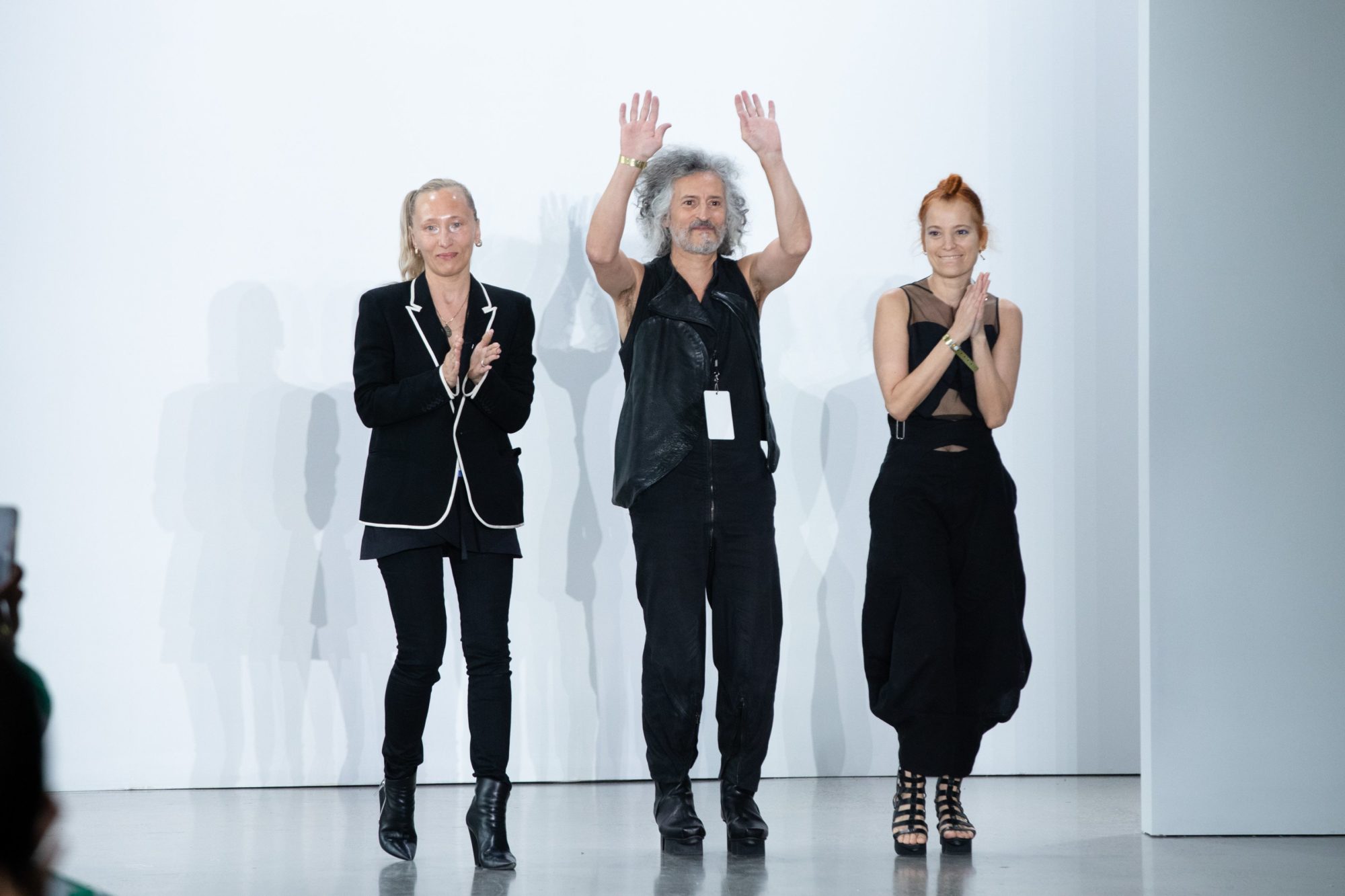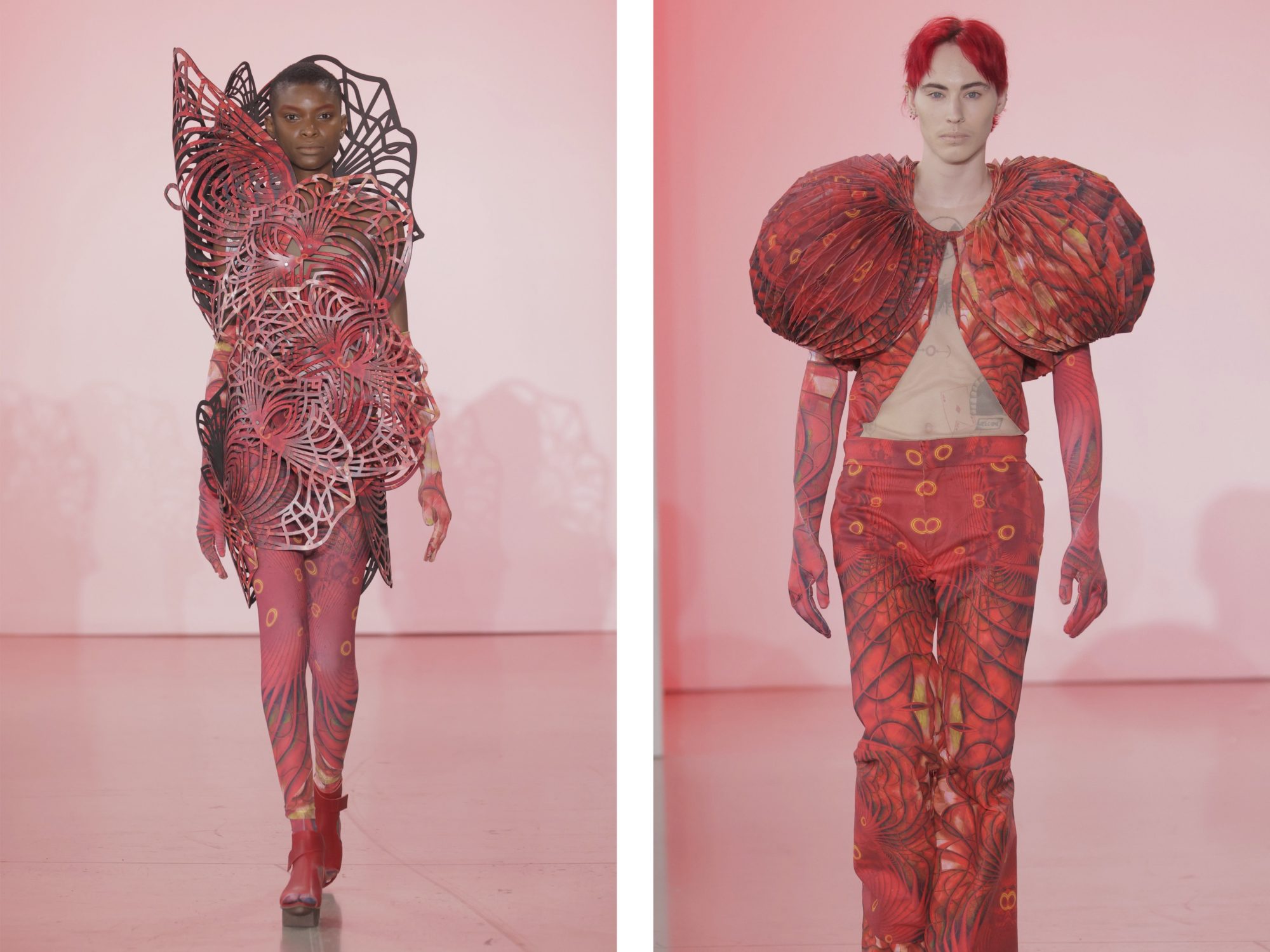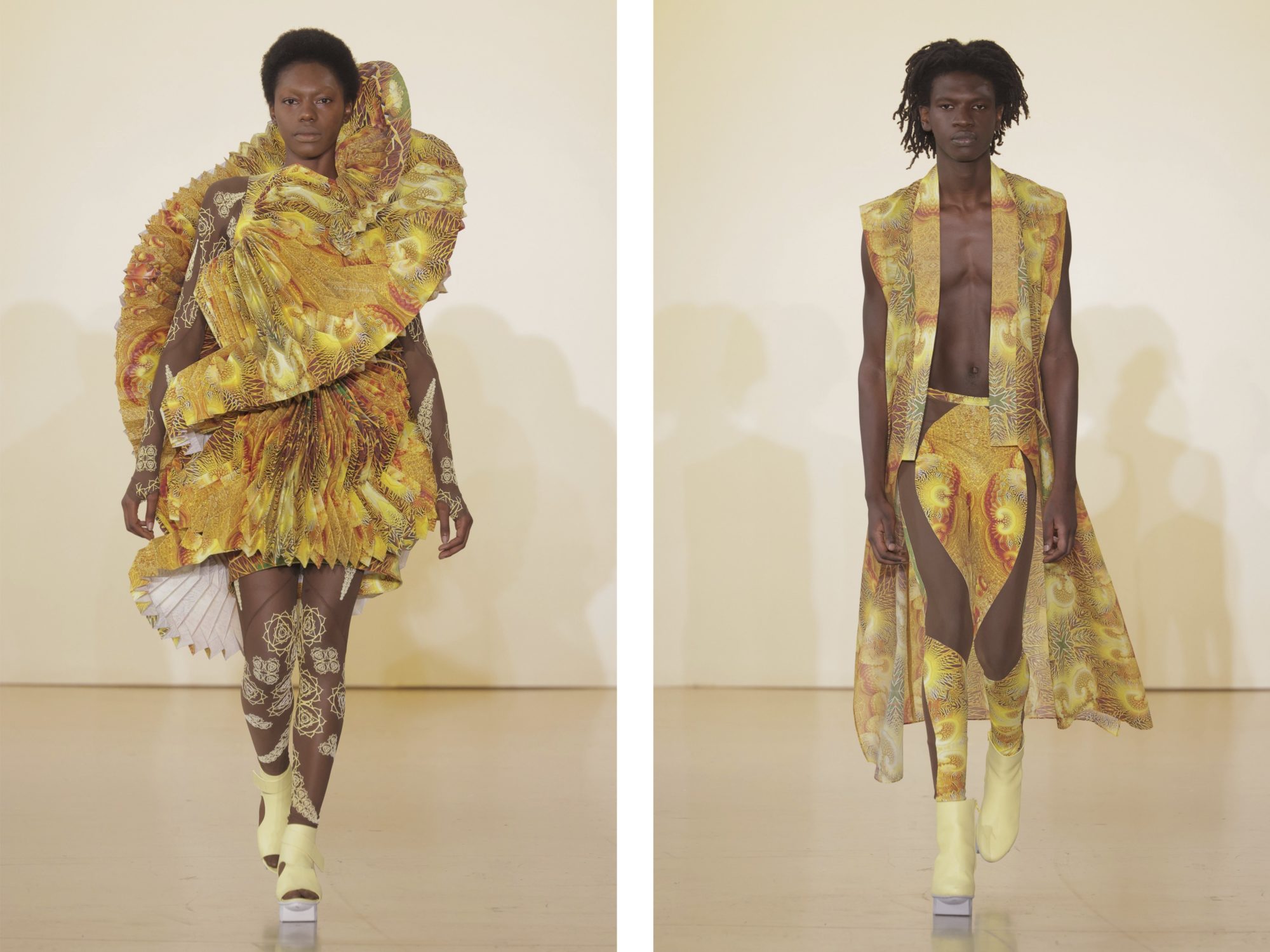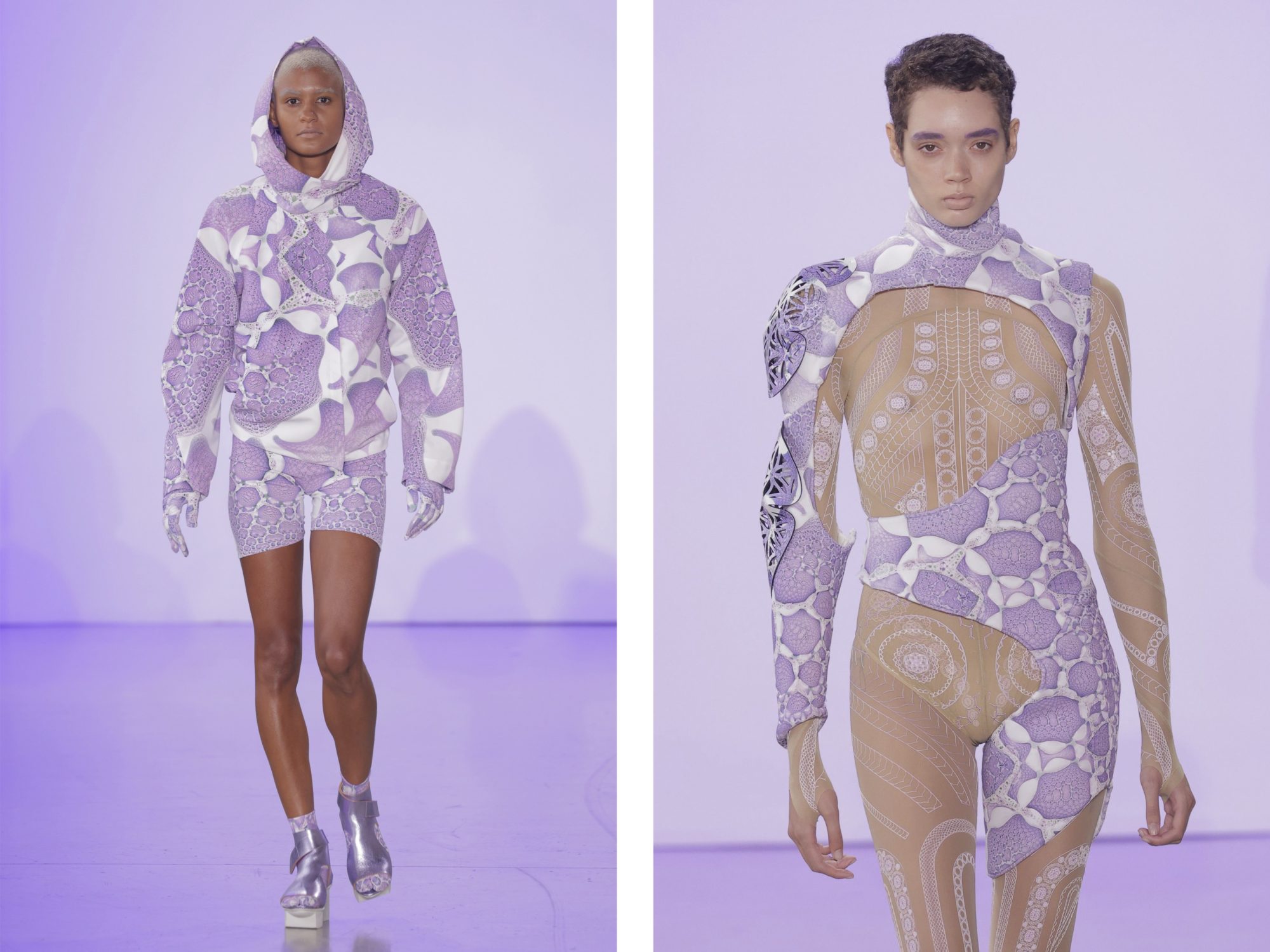Since its founding in 1999, the New York-based couture brand threeASFOUR has embodied the spirit of its three multicultural founders: bold, diverse, and existential. The label’s designs cross the boundaries of style to find inspiration in the realm of the metaphysical, where sacred geometries and internal energies reside. In other words, their clothes are really fucking cool. Case in point: the new Kundalini collection, which made its debut today on the runway at New York Fashion Week. Sporting the same boundary-pushing patterns and forms we’ve come to expect from threeASFOUR—the seven chakras are a heavy influence—this year’s lineup showcases an innovative waterless printing technique that ups the sustainability ante.
Here, we ask the founders about the new collection, the nature of avant-garde fashion, and the meaning behind the brand’s name.
Tell us about the latest collection, Kundalini.
Adi: So it’s inspired from the seven chakras. It was a dream come true to bring this theme to life because it is a very universal theme. The seven chakras appear in different cultures, the most known is the Hindu culture, but it appears in the Kabbalah and ancient Egypt. For us, it’s another tool, another expression, to promote unity.
Gabriel: It’s happening at a time when there’s a bit of a worldwide awakening. We see it with movements like Black Lives Matter, the MeToo movement, and [before that] gay marriage. Since all of these things are happening so close together, it’s telling us that humans are becoming more conscious. We felt it was the right time to release this concept. We’ve had this subject in mind for a while, but it never really felt right to launch. It’s nice to be able to learn more about the geometries and the symbolism involved with these types of themes and share that energy through clothing.
Adi: It was perfect because the seven chakras represent different colors, moods, and many other things in between. We wanted to use print this season, and we basically decided to divide the collection into seven different groups. So each group represents a different chakra, and we developed seven different prints that represent our imaginary chakras environment. They’re all 3D fractals arranged in a rainbow of different colors: the root chakra is red, the sacred chakra is orange, the solar plexus is yellow, the heart is green, the throat is turquoise, the third eye is indigo, and the crown chakra is lavender and white.
How does your lineup for NYFW 2021 emulate your brand values?
Gabriel: The theme itself, number one, speaks to all of this because this is what’s happening inside your body, the energy inside yourself. So the surface is not really involved as everybody deals with the same problems going up and down the Kundalini. It’s a universal subject. Number two, is the subject of multi-sex as our clothing is always worn by people, irrespective of how they idenitfy. So for us, this is a continuation. Now, we are talking about genderless, colorless, cultureless, and religionless so it fits well within the subject.
Why did you choose New York Fashion Week to debut the new collection?
Gabriel: It’s very true to our brand because we’ve been showing at New York Fashion Week since 1999. We believe in it. We try to showcase in Tokyo, Paris, Milan, and LA, but we are consistent about New York Fashion Week because we are New York-based designers. For us, it’s another affirmation that we are here. We believe in New York.
Adi: New York is our home so it kind of comes to us. We go with the flow. When it makes sense, we go with it.
You guys have a really multicultural founding group. How did that come about?
Adi: So we are missing one one member, Angela Donhauser. She’s half Russian, half German. I was born in Israel. I grew up in Israel and Germany—that’s where I met Angela. And then we came to New York and met Gabi, on the streets in the East Village.
Gabriel: I was born in Lebanon and my parents are Palestinian. I moved to the US in 1986 and to New York in 1991. I met the girls after working in fashion at different brands such as Marc Jacobs, Donna Karan, and so on.
Adi: With no cell phones! When you actually met people on the street!
Gabriel: Yeah, no cell phones. You say hi!
How did you choose the name threeASFOUR, and what does it mean?
Adi: We met Gabby and our ex partner, Kai, and we started ASFOUR back then, which is Gabby’s last name. We took it on because we were four people working together. And then a few years after Kai left, instead of doing ‘asthree,’ we decided to call ourselves threeASFOUR.
Gabriel: And that leaves room for one more and we’ve been collaborating with somebody, always. The nature of our existence together is collaboration. So we really like to exchange and learn from each other.
Adi: That was back in 2005. And we are still standing!



